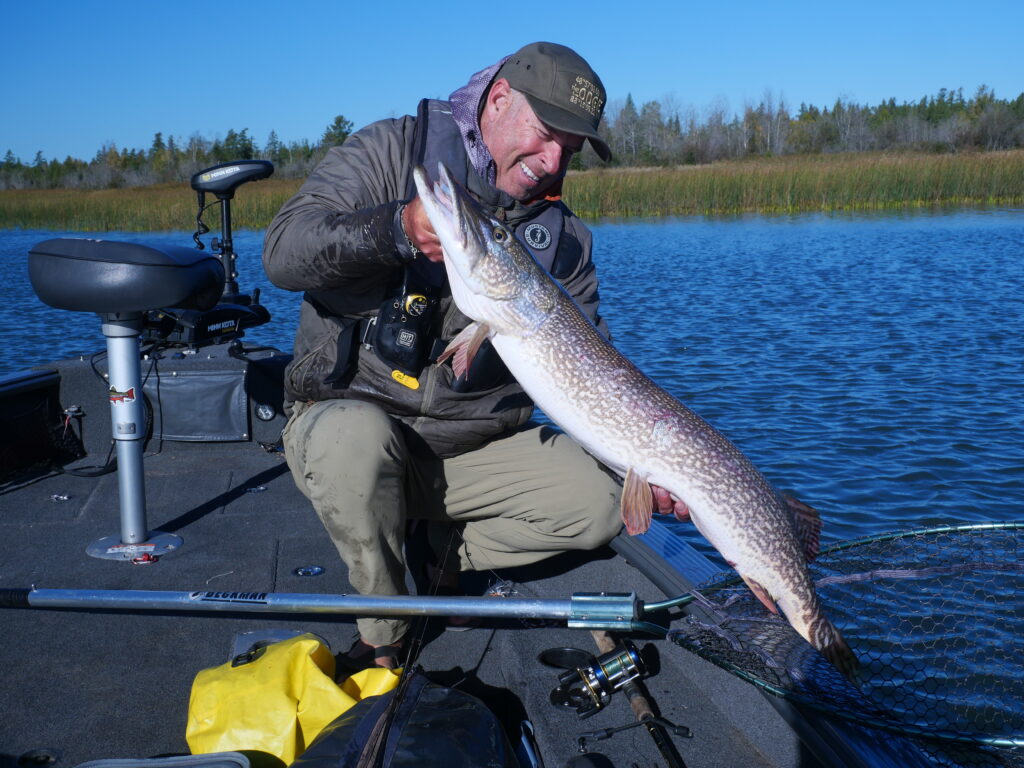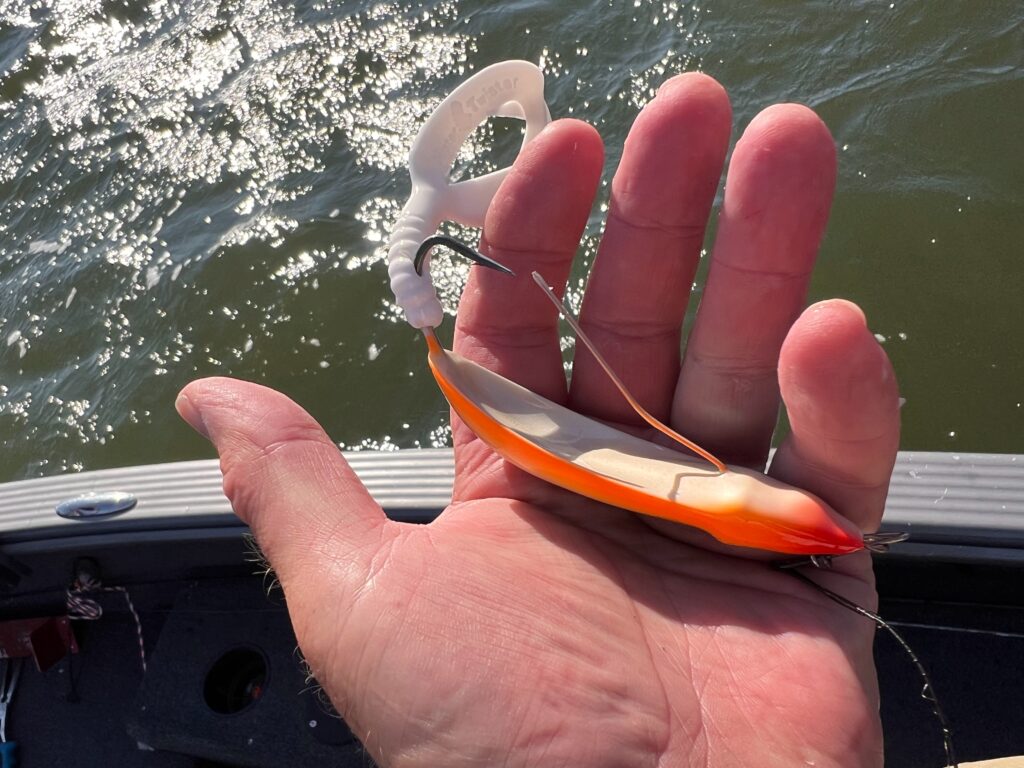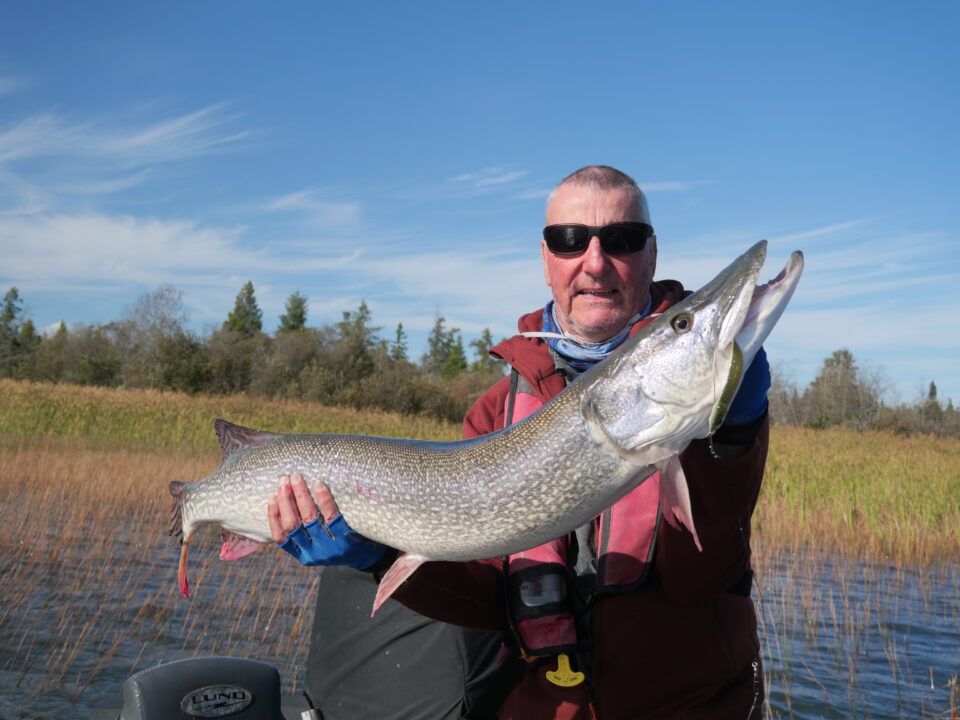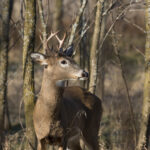The boat was moving slowly over the shallow water, as I guided the trolling motor via the foot control along the edge of a reed line. Looking down into the water, I could just make out a few cabbage weed tops spiraling upwards. A slight ripple from a cool fall wind broke up the surface, making it difficult to see down into the weeds. However, that ripple would keep the pike we were chasing a little less nervous in the barely 6 feet of water. At the bow of the boat was my father, Gord Senior, who was chucking a weedless spoon. I was at the back, throwing a #5 Mepps Musky Killer spinner and twister. We were fan casting the weed beds, trying to entice some big pike out of the salad. I made a long cast and started to reel the spinner quickly back to the boat. At about the halfway point, a long, silvery shape roared out of the weeds and inhaled the spinner.
“Got him,” I said, as the fish took off. My fishing rod was a heavy action bait caster, yet this big pike had it bent over.
“Looks like a good one son,” said Senior, who was now holding the oversized net. I turned the fish, but it was not ready to give up and hit the air, gills flared and mouth wide open.
“Holy Crap,” said my dad. “That’s a pig.” The fish finally gave up and Senior scooped the deep bodied pike into the mesh of the net. We laid it out on the measuring board and it said 44 inches on the nose. After a few hero shots, the pike was carefully released back to Lake Superior, where it likely went back to terrorizing the perch, suckers, whitefish, and herring that made it fat to begin with.

What To Use
Fall pike fishing has been a passion of mine for many years. More than three decades ago, a buddy and I would go camping in the dying days of fall and just target big pike. What we learned was that trophy pike were often lurking back in the shallow waters we had chased them in during the spring. We also discovered that we were nearly always alone. Few people seemed to target pike after Labour Day weekend. It’s always surprised me that fall pike don’t get more love. They are extra fat and ornery as the water cools.
Fall Pike Location
As the end of open water season nears, big pike go on the prowl. Large pike appreciate cooler water and move into the last green weeds they can find. Sometimes these shallow weeds are in or near back bays. These weed beds can also be found near the edge of drop-offs. I’ve located large cabbage beds by trolling large flats and marking the weeds with sonar. As often as not, if the weeds are green, there will be pike. Pike will also gravitate to the mouths of rivers that flow into lakes. Pike are drawn by the whitefish and herring that will be spawning in the vicinity of these rivers. Fall pike will also hang out in lake narrows with currents for the same reason, especially if there are rocky shoals or weeds in the area. Deeper bay edges with standing reeds have also proven to be great fall pike spots. These spots seem particularly good if there is a wind blowing in on the reeds. Fall pike won’t always be clustered up in groups, but it’s not uncommon to find a couple fish on one piece of good structure. Cover as much water as you can to locate the biters. Fall pike on the prowl will rarely be denied.
The key to fishing fall pike is to use lures that have flash, are relatively weedless and cover a lot of territory. My go-to lure for much fall pike fishing is an oversized spoon. The classic pike spoons, like the Eppinger Daredvle and Len Thompson Five of Diamonds, are both legendary lures for a reason. These lures both wobble and roll in a most enticing way. Other spoons I’d not go pike fishing without include the Lucky Strike Toronto Wobbler, Canoe Spoon, and Williams Whitefish. The long, slender profile of the Canoe Spoon and Williams Whitefish mimic a herring extremely well. Weedless spoons such as the Johnson Silver Minnow and Rapala Minnow Spoon will be extra deadly in thicker weeds. Weedless spoons have a single hook that is protected by a weed guard. This allows the spoon to snake through the thick stuff without gathering salad. Having weeds on your lure is always bad for business.

My other go to fall pike presentation is an oversized in-line spinner. The buzz of a spinner blade is something very few pike can ignore. The #5 Mepps Musky Killer is near the top of my list, especially if the blade is silver. In fact, having a silver or gold spinner blade or spoon is rarely a bad choice for pike, period. The Blue Fox Vibrax spinner is another time tested and approved pike spinner. The high vibration blade on the Vibrax “Super Bou” is especially deadly. One other spinner I will mention is the one-half ounce silver blade and black bucktail Buchertail. My largest ever fall pike, a 46-inch Lake Nipigon monster, ate that spinner many years ago off a deep weed bed.
One small pro tip I will add: Nearly every fall pike presentation I throw will have a 4 or 5-inch white scented twister on its hook. The twister adds scent appeal, buoyancy, and extra action. I’m convinced it gives you more hook-ups.
Give fall pike a try and experience the thrill of the water wolf firsthand.




